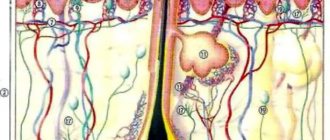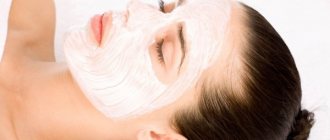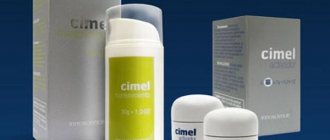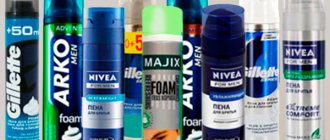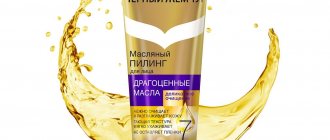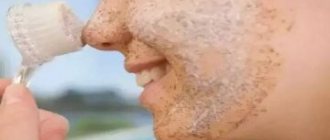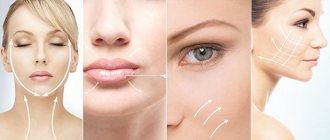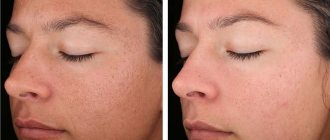Cleansing procedures for the skin have always aroused the greatest interest among patients in cosmetology clinics. A healthy epidermis is an important component of an attractive appearance. The variety of cleansing effects offered in salons does not always allow you to make an error-free choice. A cosmetologist will help you decide, but it won’t hurt to know general information about possible interventions in advance. To keep the epidermis clean, it is recommended to pay attention to peeling or facial cleansing. What is better to prefer or how to correctly combine procedures, we will figure it out further.
Peeling: features of impact
Peeling is an ideal mass choice for thoroughly cleansing the skin. The procedure allows you to remove dirt from the pores and exfoliate the keratinized layer of tissue. The impact activates local metabolism and stimulates the renewal of integument.
To achieve the goal, different exfoliation options are used. Superficial chemical peels are widely popular. The method is available for home use, simple, comfortable, and does not involve complex rehabilitation. At the same time, light exfoliation with acids provides an optimal cleansing effect.
Note! Ultrasonic peeling is also of interest, the results of which combine the effect of exfoliation and pore sanitization. You can buy an ultrasound device for home use. The aesthetic ultrasound procedure is simple and effective.
Superficial peeling is indicated for sanitation, healing of the integument, and prevention of age-related changes. The intervention allows you to achieve:
- cleansing the skin surface of dead cells;
- opening, narrowing pores;
- elimination of comedones, acne;
- normalization of the sebaceous glands;
- reducing the tendency to rashes;
- increasing turgor, improving the appearance of the epidermis;
- minimizing pigment spots, scars, wrinkles.
As a result of the procedure, the overall functioning of tissues improves. This is useful for everyone, with the exception of those with contraindications that are predominantly temporary.
Often, superficial acid peeling precedes other procedures. These include: plastic surgery, injection treatments, banal cleaning.
Types of facial peels
Ultrasonic cleaning and chemical peeling using acids of different concentrations are the procedures most often found in the price list of beauty salon services. Before deciding on one or another manipulation (or maybe both at once), you should find out what types of peeling exist.
Superficial
These types of peeling are based on fruit acids (so-called AHA acids): lactic, glycolic, malic, mandelic or tartaric. Their concentration is usually low, which makes this procedure gentle and soft. This exfoliation acts exclusively on the surface layer of the epidermis, which does not have living cells. As a result, sebum dissolves and the thickness of the epidermis decreases. Thus, high-quality restoration of the skin occurs, smoothing of surface wrinkles and elimination of pigmentation. Superficial exfoliation is suitable for clients with young (over 25 years old) skin. It is permissible to carry out such peeling in a course of 7-10 procedures, taking a break of 10 days each time.
Median
Median exfoliation products are able to penetrate to the level of living cells and trigger their exfoliation processes. This peeling gives strong results - renewal of skin cells, as a result - enhances its regeneration, triggers the processes of natural production of collagen and elastin. The course of such peeling is from 1 to 3 procedures with an interval of 1 month.
Deep
Deep cleansing (phenol peeling) aims to completely remove “old” layers of skin. The composition does not affect only the thin cellular layer, the so-called areas of cell growth. This is where the growth of a new layer of epidermis occurs. Is cleaning necessary at all, in particular deep cleaning with phenol peeling? Undoubtedly, if the following signs occur:
- pronounced processes of integument withering;
- deep wrinkles, creases;
- age-related pigmentation;
- presence of scars.
Facial cleansing: characteristics of the procedure
Facial cleansing is an ideal option for thorough cleansing for those with oily, combination skin and a tendency to regularly clog pores. The procedure allows you to achieve complete cleansing of the ducts, removal of sebaceous plugs, blackheads, comedones, and pimples. The impact is aimed at hygiene, restoration of impaired tissue functioning.
To achieve the goal, laser, ultrasound, vacuum, brushes, and special preparations are used, but the most common option is mechanical cleaning, performed by hand, using tools. The cleansing method is simple and in demand at all times. It is proper cleaning that allows you to completely get rid of the contents of the pores.
Periodic facial cleansing is recommended as a thorough hygiene procedure for anyone who is prone to clogged pores and the appearance of rashes. The intervention allows you to achieve:
- freeing pores from impurities;
- removal of blackheads, comedones, pimples;
- improving the health and appearance of the epidermis;
- improving the functioning of tissues.
Deep cleansing of skin pores is aimed at solving a limited range of problems. The procedure is necessary as a regular intervention for a certain group of patients.
Exposure is mandatory before any intensive care program. Patients with moderate clogged pores and no inflammation are offered to make do with the use of cosmetics with strong cleansing abilities.
Those with an unattractive picture on their face will not be able to eliminate mechanical effects.
Peeling and cleansing - what's the difference?
To understand the differences between professional cleaning and chemical exfoliation, you should highlight the features of both procedures.
Table “Peeling and cleaning – what’s the difference”
| Exfoliation | Cleaning |
| It is carried out using various drugs and means. | Superficial cleansing of the skin using hands or special devices. |
| The goal is to cleanse the skin of keratinized scales formed in the layers of the epidermis. | The goal is to remove subcutaneous fat, dirt, blackheads, cosmetic residues, etc. |
| Promotes skin rejuvenation by improving and restoring blood vessels. | In the process, infection is prevented along with the elimination of cosmetic skin defects. |
| Recommended for clients over 25 years old. At an earlier age, it can affect the body’s protective reserves and its ability to cope with skin problems. | Suitable for any age, especially suitable for teenage skin. |
So, the key differences between the two procedures are the following factors:
- Depth of impact;
- Execution technique;
- Productivity.
Cleaning is not as deep
Manual mechanical cleaning is a hygienic procedure in which all manipulations are performed at the upper level of the skin layers. During the intervention, impurities, blackheads, excess sebum and other defects are removed.
The exfoliant is aimed at a deeper effect, which affects not only the epidermis, but also the dermis itself. During the procedure, special devices or acids of varying concentrations are used.
Cleaning can be done at any age
Another factor that comes into play in the question – what is the difference between peeling and cleansing the skin – is age. Unlike exfoliation, cleansing can be done at almost any age. If there are indications, peeling is allowed to be performed by persons over 14 years of age, ideally from 25. Deep exfoliation is not prescribed at all before 40-50 years of age, because this procedure affects the deepest layers of the skin.
There is no chemical, only mechanical
Cleaning is performed by a cosmetologist using his fingers or using special devices, i.e., mainly mechanically, without any multi-acid compositions.
Both manipulations involve exfoliation of the upper layer of the epidermis. But the process of peeling is chemical, acidic, which is fundamentally different from cleansing.
Cleansing is performed using fingers or special devices. In other words, in this case there is only a mechanical effect without the use of chemical components.
Cleaning only removes dirt and rashes
In the process of choosing from two main cosmetic procedures, the client will invariably be faced with a choice: peeling or cleansing, which is better?
Cleaning is designed to solve only a limited number of skin problems (i.e., help eliminate sebaceous plugs, comedones, blackheads, etc.).
Peeling is suitable for those with age spots, dull skin, and age-related facial changes. As a rule, exfoliation eliminates a much larger number of skin imperfections, and in some cases it can even replace a facelift.
Cleaning is done once a month, peeling – once a week
According to most cosmetologists, cleansing is a necessary procedure in the facial care process. Unfortunately, it’s not possible to cleanse your face “once and for several years.” For this reason, facial cleansing is recommended on average once a month.
According to the qualified opinion of specialists, peeling should be done in a course, approximately once every 7 days.
By the way. Often clients of cosmetology clinics are interested in the question: is it necessary to clean before peeling? The answer largely depends on the client's skin condition. In some cases, such procedures complement each other perfectly.
Similarities and differences between procedures
Both cleansing options, peeling and cleansing, are aimed at maintaining skin hygiene, sanitizing and improving the health of the integument. At the same time, exfoliation is aimed at achieving brighter, more comprehensive results.
Cleaning, on the contrary, gives a narrowly targeted effect: deep cleansing of pores. This is a significant difference between one option of deep cleansing and another.
Peeling is suitable for a wide range of patients. The intervention can be performed for the prevention and treatment of deficiencies. Cleaning is done strictly according to indications.
The process is aimed at eliminating problems. Preventing the formation of aesthetic defects using pore-scanning interventions is difficult. This is a significant difference between the options.
Peeling and cleaning are approximately the same in terms of the comfort of the process, the possibility of developing side effects and complications. There are a wider range of contraindications for exfoliation. Cleaning is often performed on young patients, and peeling on mature patients. The cosmetologist will tell you how one treatment option differs from another if you have doubts about the choice.
What to choose
A cosmetologist will help you make a choice in favor of cleaning or peeling. The procedures often complement each other. It is impossible to put an equal sign between them. The influences are aimed at obtaining different results. The effect of the procedures is compatible, but not comparable.
A cosmetologist can give a clear answer to the question of choice. The doctor will assess the skin condition and select a care program. Often the cosmetologist's response is to convince him of the need to perform two procedures sequentially.
If we talk about the primary need for this type of intervention, then cleansing is prescribed for those with oily, combination skin with acne and pimples. Peeling is mandatory for hyperkeratosis, the presence of age spots, scars, wrinkles, and decreased tissue turgor.
Which is better: ultrasonic cleansing or chemical peeling?
Only an experienced cosmetologist can correctly answer the question of which is better - peeling or ultrasonic cleaning. He will assess the condition of the skin, its features and make recommendations, including based on the patient’s age.
If we compare both procedures without reference to a specific patient, then ultrasonic cleaning looks preferable. It is painless, does not require much time, is safe for the epidermis, and there is no need to restore the skin after it. You can get burned during a chemical peel, and a recovery period is required after any type of peeling procedure .
Combination rules
Many patients are interested in whether it is possible to do both cleansing options at once. According to ordinary people, this will bring a double positive effect.
Cosmetologists do not recommend performing both procedures at the same time. The best option: preliminary preparation of the skin using cosmetics with a slight exfoliation effect. It is acceptable to exfoliate using products with minimal acid content, right before cleansing.
Perform standard professional peeling (acid concentration 20–50%) with any depth of impact, it is recommended at intervals of 1–4 weeks before or after cleansing. More precisely, the gap interval will be determined by a cosmetologist.
Attention! There is an option to “close” the cleaning with peeling. Cosmetologists use light acid preparations. Exfoliation is not done if the integrity of the tissue is damaged. Mechanical cleansing of pores is not performed if the stratum corneum is excessively thick and covers the ducts.
The doctor can prescribe the sequence of procedures. If the pores are excessively clogged, it is recommended to first clean them, after healing, and if there is no inflammation, peel them. If the skin is excessively thickened and dehydrated, then it is better to initially choose peeling.
TYPES OF CLEANING (+TABLE)
Let's look at what types of facial cleansing there are in a salon and what their pros and cons are:
| TYPE OF CLEANING | WHO IS SUITABLE FOR? | WHO IS NOT SUITABLE FOR? |
| Manual (mechanical) |
|
|
| Ultrasonic |
|
|
| Vacuum |
|
|
We recommend: 6 BIOPEELINGS: with snails, fish, amber and other miracles
Manual or Manual (Mechanical)
This is manual facial cleansing by a cosmetologist, the most popular and accessible of all. In itself, it is a fairly effective measure, but at the same time very painful. This technique can easily remove even the deepest stains.
Involves the use of basic cosmetic tools:
- Uno spoons (c) are a device that helps to quickly and effectively cleanse the skin of all kinds of acne and comedones of any type;
- All kinds of special brushes;
- Vidal steel rod (b) with a sharp end, with the help of which pimples and closed inflammations are opened before their removal;
- Metal loop (d) , which perfectly removes sebaceous plugs and the contents of hair follicles.
Makes it easy to deal with a wide variety of stains: from blackheads to painful pimples.
* a) Cosmetology lamp (+ Magnifying glass); b) Vidal needle; c) Uno slotted spoon; d) Loop for cleaning the face; e) Vapazon (Steaming).
Ultrasonic cleaning
Ultrasonic cleaning is performed by a specialist using a special scrubber, which sends ultrasonic waves into the deep layers of tissue and thus opens the pores, cleansing them, and removes the top layer of the epidermis.
In its action, this cosmetic manipulation is similar to chemical peeling, which also exfoliates different layers of the skin. Only in the latter case, unlike ultrasonic cleaning, all kinds of acids of different concentrations are used.
The method copes well with small blackheads and surface impurities, and also stimulates the renewal of the epidermis through a kind of soft tissue massage.
Ultrasonic facial cleansing
Vacuum cleaning
In this technique, the cosmetologist uses a special device with a tube-shaped attachment at the end. With its help, during skin treatment, sebaceous deposits, residues of cosmetics and other impurities, as well as dead cells are effectively removed from steamed pores. This procedure resembles superficial exfoliation, only without the use of acids.
The method is not too painful, but is effective for solving problems associated with superficial contamination of the face, swelling and poor circulation.
…and others
There are other methods: for example, cleaning with electric current (called “galvanic” or “disincrustation”). Treatment of this type is carried out by a cosmetologist using weak galvanic microcurrents. Thanks to this, the pores expand, the unnecessary contents in them are destroyed and all the dirt comes out, transformed during the process into a soap solution.
We recommend: JESSNER peeling VS RETINOIC peeling. What to choose?
Before the session, a special gel must be applied to the treated area, which allows the device to better glide over the surface and ensure maximum contact with the skin.
Opinion of cosmetologists
Doctors approve of both cleansing options: peeling and cleansing. Procedures are prescribed or their sequential implementation depending on the needs of the patient’s skin. Exfoliation and mechanical cleansing of pores are avoided only if there are contraindications.
The cosmetologist recommends monthly cleaning and seasonal peeling.
The cosmetologist recommends light peeling followed by cleansing.
The cosmetologist allows cleaning and peeling with the right approach to the patient.
The cosmetologist sees harm in cleaning for those with rosacea.
Contraindications and precautions
If the following phenomena and diseases are present, any facial cleansing procedures are not recommended :
- progressive herpes (in the rash stage);
- eczema;
- inflamed areas (purulent diseases, rashes);
- mechanical damage (abrasions, scratches, open wounds);
- infectious skin diseases;
- severe stage of hypertension, asthma, diabetes;
- increased temperature (fever);
- period of pregnancy and lactation;
- postoperative period (when the body is weakened);
- severe mental disorders.
Well-groomed, healthy skin is always attractive: the face glows with natural beauty and youth.
To make your face look like this, it takes a little effort , regular cleansing and following all the specialist’s recommendations.
Patient reviews
Patients have a positive attitude towards exfoliation. Many people choose this method of deep skin cleansing. Opinions about mechanical sanitation of pores are often negative. Patients see the procedure as a temporary solution to the problem, but at the risk of worsening the situation.
Opt for peeling.
The patient does not approve of regular cleanings and advises establishing daily care.
